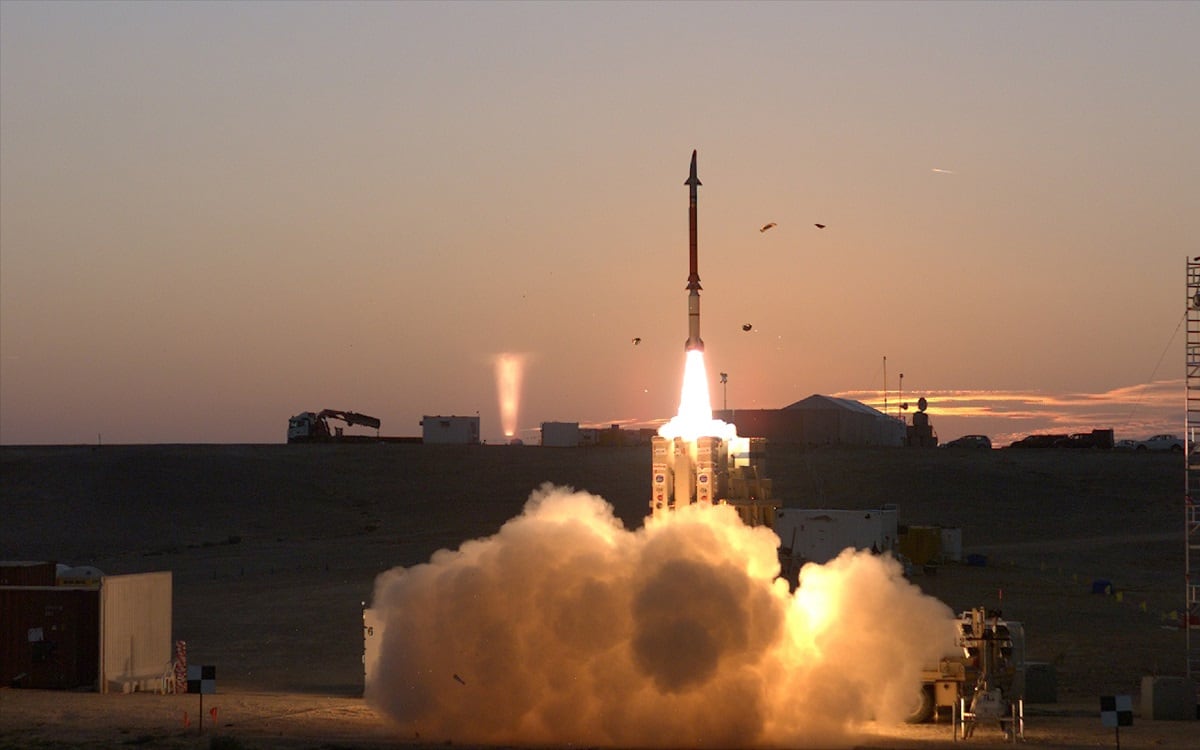JERUSALEM — For the first time, the National Defense Authorization Act includes a section on U.S.-Israel cooperation in countering unmanned aerial systems, in the fiscal 2019 version.
The cooperation will identify “capability gaps” of the U.S. and Israel in countering UAVs and seek out projects to address those gaps to strengthen U.S. and Israeli security. The new cooperation envisions funding for research and development efforts and identifying costs that foresee close cooperation modeled on previous successful programs that Israel and the U.S. have collaborated on, including missile defense and anti-tunneling initiatives.
Israel and the U.S. have been at the forefront of air defense cooperation for decades. U.S. Reps. Charlie Crist and Mike Johnson introduced in February a bill titled “United States-Israel Joint Drone Detection Cooperation Act.” Parts of the bill were included in the NDAA passed in both houses of Congress in July.
“I am honored to have our bill included in the NDAA and to see it signed into law by President [Donald] Trump. This is an important step not only for our strongest ally in the Middle East but for the United States as well,” Johnson said in July. The president signed the NDAA into law on the afternoon of Aug. 13.
The initiative foresees “joint research and development to counter unmanned aerial vehicles [which] will serve the national security interests of the United States and Israel.” Included as Section 1272 of the final NDAA presented to the president on Aug. 3, the cooperation contains five parts, including identification of the capability gaps that exist, identifying cooperative projects that would address the gaps, assessing the costs of the research and development, and assessing the costs of procuring and fielding the capabilities developed.
Reports on the cooperation will be submitted to the congressional defense committees, the Senate Foreign Relations Committee and the House Foreign Affairs Committee.
The threat of drones has increased in recent years. On Feb. 10 an Iranian-made drone entered Israeli airspace near the northern town of Beit Shean. It had flown from the T4 air base in Syria. Israel identified and tracked the drone from Syria and sent an Apache helicopter to shoot it down. The drone was revealed to be armed with explosives.
RELATED

Former Mossad chief Danny Yatom said in an interview in April that the drone was sophisticated and “an exact replica of the U.S. drone that fell in their territory,” referring to the American RQ-170 Sentinel, which was downed in Iran in 2011. Iran developed two drones based on the Sentinel, one called Shahed 171 and an armed version dubbed Saeqeh, which debuted in 2016.
In 2012, Hezbollah used a drone to try to carry out surveillance of the Dimona nuclear reactor in southern Israel. “It’s not the first time and it will not be the last,” warned Hezbollah leader Hassan Nasrallah.
Conflict Armament Research reported in March 2017 that kamikaze drones using Iranian technology were being used by Houthi rebels in Yemen against Saudi Arabia and the United Arab Emirates. The UAE has sought to bring attention to this threat during the conflict in Yemen, in which a Riyadh-led coalition is fighting the Houthis.
Drones were also used by the Islamic State group to attack U.S.-led coalition forces in Syria and Iraq. And Afghan officials reported an Iranian drone entered their airspace in August 2017.
In September 2017, Israel used a Patriot missile to down a Hezbollah drone. Israel used Patriot missiles twice to down Syrian UAVs near the Golan Heights demilitarized zone in July 2018.
The U.S. reportedly used an F-15E Eagle to shoot down an Iranian-made Shahed 129 drone in June 2017 in Syria. The drone was heading for the U.S. base at Tanf, which is located in Syria near the Jordanian border.
A systematic examination of the emerging drone threat is in the works. The U.S. Defense Department has been allocating resources to counter UAVs, with U.S. Central Command requesting up to $332 million over the next five years for efforts to counter drones. The U.S. Army has been looking for new missiles to defend against a variety of threats, including drones. This will include the Expanded Mission Area Missile and may include other Israel missiles such as the Tamir interceptor for use with a multimission launcher.
Seth J. Frantzman is the Israel correspondent for Defense News. He has covered conflict in the Mideast since 2010 for different publications. He has experience covering the international coalition against the Islamic State group in Iraq and Syria, and he is a co-founder and executive director of the Middle East Center for Reporting and Analysis.







